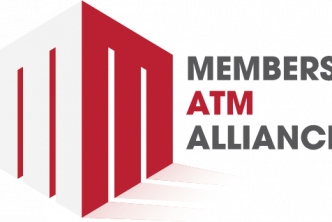By: Andy Roquet, Senior Executive Benefits Specialist, TruStage
Credit unions are facing a difficult people problem, and it may not be the one that immediately comes to mind. While labor shortages and other Great Resignation-style woes continue to complicate the movement’s human resources, there is another, perhaps even more pressing, aspect of leadership the industry is facing: the ever-expanding skill set of effective CEOs.
Like most modern business challenges, digital transformation is to blame. Today’s CEOs need more technical acumen than ever before… and that’s just to have a meaningful conversation with a member, let alone conduct a worthwhile strategic planning session on the fintech opportunity.
The softer side of the digital leader
The fact is modern CEOs across all industries must now possess digital-leadership skills in addition to all the financial, operational, and developmental skills they have needed for decades.
Effective digital leadership results mainly from the deployment of newly in-demand soft skills. These are talents like motivating through rapid or unexpected change and mobilizing strategic empathy to build a culture of inclusion.
While the programs instituted by digital leaders will look different from credit union to credit union, and certainly from person to person, most will be rooted in values like autonomy, recognition, equity, and belonging. A few examples include:
- Putting in the time to develop a mutually beneficial hybrid working model.
- Green-lighting more beta or pilot projects to reframe “failure” as exploration.
- Instituting configurable work-life policies that respect the distinctive needs of employees.
- Acknowledging holidays of all cultures with time-off or another celebratory marker.
Developing digital leaders from within
Many credit unions have already identified their next CEO as a part of a smart succession planning strategy. While those very credit unions may have supreme confidence in the proven effectiveness and people-helping-people passions of the individual on deck to lead the institution, they may be less sure of the candidate’s digital leadership excellence. In these cases, it may be tempting to scrap the succession plan and look outside the institution for a new candidate to lead the credit union into the next era. However, that may not be the best decision.
That success rate is likely due to several factors, including the fact that internal candidates already have their crucial support networks in place. In addition, decision makers have a much more accurate set of historical information on internal candidates. Lastly, existing employees can be developed earlier to suit the credit union’s distinctive membership, culture, and vision for the future, setting them up for eventual success in the C-suite.
Upskilling and reskilling not only for the frontline
Progressive organizations often deploy upskilling or reskilling initiatives when they identify a digital-leadership skill gap among their up-and-comers. Traditionally, upskilling and reskilling have been thought of as programs to benefit frontline employees. Think Amazon’s Career Choice program or AT&T’s Future Ready initiative.
However, the great news is that the principles of upskilling and reskilling can apply to management, as well.
Take reverse mentoring, for example. The concept pairs senior- or management-level staff with entry-level colleagues. Jack Welch first deployed it in 1999, pairing General Electric executives with junior staff to learn about the internet.
Hanging with the digital natives on their team is not only about helping rising credit union leaders more richly experience the relevance of technology and digital engagement. It’s also about exposing them to new ways of approaching work, from questioning established processes to fixing things that aren’t broken.
Resources for credit unions
Upskilling and reskilling are small pieces of a much larger pie made for the care and feeding of tomorrow’s executive teams. To learn more about designing leadership continuity programs, check out more insights for credit union leaders & directors.






